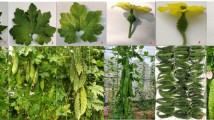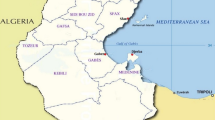Abstract
AFLP markers were used to assess the genetic diversity of 77 breeding lines from three of the world's major canola qualityBrassica juncea breeding programs from Canada (Agriculture and Agri-Food Canada and Saskatchewan Wheat Pool) and Australia (Agriculture Victoria). The objectives of the paper were to assess the genetic diversity within and between these three breeding programs and to assess genetic diversity of the canola quality germplasm as compared to mustard quality B. juncea. Fifteen lines of mustard quality B. juncea from India, China, Russia and Australia were also included in the investigation. Ten EcoR1/Mse1 based primer pairs generated 751 scorable fragments with an average of 26 polymorphic bands per primer pair (35%). Similarity coefficients were calculated using the Simple Matching coefficient and adendrogram was developed using the UPGMA procedure, resulting in germplasm being partitioned into five main groups. Line specific markers were discovered that have potential in enhancing the efficiency of individual breeding programs using breeding techniques like accelerated backcrossing. Further understanding the genetic diversity within and between programs has implications for future breeding and collaboration within and between the three programs.
Similar content being viewed by others
References
Anonymous, 2002. Procedures of the Western Canada Can-ola/Rapeseed Recommending Committee for the evaluation and recommendation for registration of canola/rapeseed candidate cultivars in western Canada, 31 pp.
Beckman, J.S. & M. Soller, 1983. Restriction fragment length poly-morphism in genetic improvement: methodologies, mapping and costs. Theor Appl Genet 67: 35–43.
Burton, W.A., S.J. Pymer, P.A. Salisbury, J.T.O. Kirk & R.N. Oram, 1999. Performance of Australian canola quality Indian mus-tard breeding lines. Proc 10th Int Rapeseed Congress, Canberra, Australia. CD Rom.
Corbellini, M., M. Perenzin, M. Accerbi, P. Vaccino & B. Borghi, 2002. Genetic diversity in bread wheat, as revealed by coeffi-cient of parentage and molecular markers, and its relationship to hybrid performance. Euphytica 123: 273–285.
Diverat, I., E. Margale & G. Thomas, 1999. RAPD markers on seed bulks efficiently assess the genetic diversity of Brassica oleracea L. collection. Theor Appl Genet 98: 1029–1035.
Downey, R.K., 1990. Brassica oilseed breeding – acheivements and opportunities. Plant Breed Abstr 60: 1165–1170.
Downey, R.K. & S.R. Rimmer, 1993. Agronomic improvement in oilseed Brassicas. Adv Agron 50: 1–66.
Johannessen, M.M., T.N. Mikkelsen & R.B. Jorgensen, 2002. CO2 exploitation and genetic diversity in winter varieties of oilseed rape (Brassica napus); varieties of tomorrow. Euphytica 128: 75–86.
Kirk, J.T.O. & R.N. Oram, 1981. Isolation of erucic acid free lines of Brassica juncea: Indian mustard now a potential oilseed crop in Australia. J Aust Inst Agric Sci 47: 51–52.
Lionneton, E., S. Ravera, L. Sanchez, G. Aubert, R. Delourme & S. Ochatt, 2002. Development of and AFLP based linkage map and localization of QTL's for seed fatty acid content in condiment mustard (Brassica juncea). Genome 45: 1203–1215.
Lombard, V., C.P. Baril, P. Dubreuil, F. Blouet & D. Zhang, 2000. Genetic relationships and fingerprinting of rapeseed cultivars by AFLP: Consequences for varietal registration. Crop Sci 40: 1417–1425.
Lombard, V., B. Tireau, F. Blouet, D. Zhang & C.P. Baril, 2002. Uselfulness of AFLP markers to estimate varietal homogen-eity of rapeseed inbred line varieties in the context of plant registration and protection. Euphytica 125: 121–127.
Love, H.K., G. Rakow, J.P. Raney & R.K. Downey, 1990. The development of low glucosinolate mustard. Can J Plant Sci 70: 419–424.
Mantel, N.A., 1967. The detection of disease clustering and a generalized regression approach. Cancer Res 27: 209–220.
Negi, M.S., M. Devic, M. Delseny & M. Lakshmikumaran, 2000. Identification of AFLP fragments linked to seed coat colour in Brassica juncea and conversion to a SCAR marker for rapid selection. Theor Appl Genet 101: 146–152.
Oram, R.N., P.A. Salisbury, J.T.O. Kirk & W.A. Burton, 1999. Brassica juncea breeding In: P.A. Salisbury, T.D. Potter, G. Mc-Donald & A.G. Green (Eds.), Canola in Australia: The First Thirty Years, pp. 37–40. Organising Committee of the 10th International Rapeseed Congress, Canberra, Australia.
Plieske, J. & D. Struss, 2001. Microsatellite markers for gen-ome analysis in Brassica. I. Development in Brassica napus and abundance in Brassicaceae species. Theor Appl Genet 102: 689–694.
Potts, D.J., G.W. Rakow & D.R. Males, 1999. Canola-quality Brassica juncea, a new oilseed crop for the Canadian prairies. Proceedings 10th International Rapeseed Congress, Canberra, Australia. CD Rom.
Powell, W., M. Morgante, C. Andre, M. Hanafey, J. Vogel & S. Tingey, 1996. The comparison of RFLP, RAPD, AFLP and SSR (microsatellite) markers for germplasm analysis. Mol Breed 2: 225–238.
Pradhan, A.K., V. Gupta, A. Mukhopadhyay, N. Arumugam, Y.S. Sodhi & D. Pental, 2003. A high density linkage map in Brassica juncea (Indian mustard) using AFLP and RFLP markers. Theor Appl Genet 106: 607–614.
Rakow, G. & J.P. Raney, 1995. Field performance of canola qual-ity Brassica juncea. Proceedings 9th International Rapeseed Congress, Cambridge, UK. 2: 228–230.
Rohlf, F.J., 2002. NTSYS-pc. Numerical Taxonomy and Multivari-ate Analysis System, Version 2.1. Applied Biostatistics, New Yor k.
Scarth, R., 1995. Developments in breeding of edible oil in Brassica napus and B. rapa. Proceedings 9th International Rapeseed Congress, Cambridge, UK. 2: 377–382
Schneider, S., D. Roessli & L. Excoffier, 2000. Arlequin ver 2000: A software for population genetic data analysis. Genetic and Biometry Laboratory, University of Geneva, Switzerland.
Servin, B. & F. Hospita, 2002. Optimal positioning of markers to control genetic background in marker-assisted backcrossing. J Hered 93: 214–217.
Srivastava, A., V. Gupta, D. Pental & A.K. Pradhan, 2001. AFLP-based genetic diversity assessment amoungst agronomically im-portant natural and some newly synthesized lines of Brassica juncea. Theor Appl Genet 102: 193–199.
Tautz, D., 1989. Hypervariability of simple sequences as a general source for polymorphic DNA markers. Nucleic Acids Res 17: 6463–6471.
Vos, P., R. Hogers, M. Bleeker, M. Reijans, T. van de Lee, M. Hornes, J.P. Frijters, J. Peleman, M. Kuiper & M. Zabeau, 1995. AFLP: A new fingerprinting technique for DNA fingerprinting. Nucleic Acids Res 23: 4407–4414.
Williams, J.G.K., A.R. Kubelik, K.J. Livak, J.A. Rafalski, S.V. Tingey, 1990. DNA polymorphisms amplified by arbitrary primers are useful as genetic markers. Nucleic Acids Res 18: 6531–6535.
Woods, D.L., J.J. Capcara & R.K. Downey, 1991. The potential of mustard (Brassica juncea (L.) Coss) as an edible oil crop on the Canadian Prairies. Can J Plant Sci 71: 195–198.
Author information
Authors and Affiliations
Rights and permissions
About this article
Cite this article
Burton, W., Ripley, V., Potts, D. et al. Assessment of genetic diversity in selected breeding lines and cultivars of canola quality Brassica juncea and their implications for canola breeding. Euphytica 136, 181–192 (2004). https://doi.org/10.1023/B:EUPH.0000030668.62653.0d
Issue Date:
DOI: https://doi.org/10.1023/B:EUPH.0000030668.62653.0d




